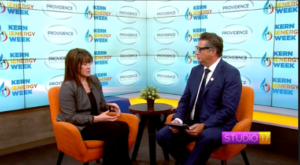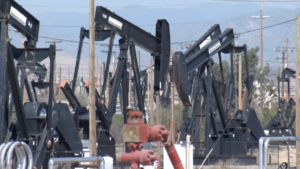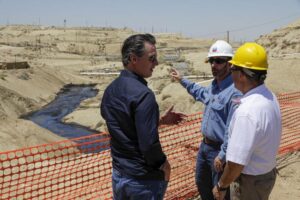Wednesday, June 25 2014 07:15 PM
By John Cox Californian staff writer jcox@bakersfield.com
The federal government may have lost confidence in the economic potential of California’s Monterey Shale, but the oil industry’s faith in the formation remains unshaken.
That much was clear Wednesday as three dozen oil company representatives gathered in Bakersfield for the first half of a two-day conference focused on the giant “source rock” underlying much of Kern County and other parts of Southern California.
In a series of presentations heavy on geological and engineering detail, speakers encouraged attendees to keep working to tap a formation the U.S. Energy Information Administration believed as recently as last year contained roughly 14 billion barrels of oil, making it the largest shale petroleum deposit in the country.
Last month the EIA slashed its official estimate of the Monterey’s potential, saying existing technology allows the industry to tap only 4 percent of that total. That deflated observers who were counting on the formation to provide a long-term bonanza of oil jobs and tax revenues.
But on Wednesday, one speaker after another brushed aside the agency’s doubts. They called attention to hopeful strategies ranging from the use of acids to stimulate oil wells to fracking to a focus on geological formations naturally fractured over millions of years.
A few even welcomed the federal reassessment, saying the EIA’s earlier estimate had raised hopes to an unrealistic level.
Since the revision, the official government estimate “is kind of back to where it potentially should be,” said Paul Gagnon, senior vice president of Denver-based oil producer Central Resources Inc.
The biggest fear expressed at the conference had little to do with whether the Monterey could be successfully exploited at a reasonable price. It was that environmentalists were turning public opinion against the industry’s use of tools such as fracking, or hydraulic fracturing, a decades-old oil field technique that activists and some state lawmakers worry could contaminate groundwater and air.
As has happened repeatedly at industry gatherings over the past two years, speakers called for a coordinated campaign to disseminate accurate information about the effectiveness and relative safety of fracking and using acids in oil wells.
Gagnon blamed oil companies’ “grand failure to communicate” for widespread concerns about fracking.
Government regulation was another big topic at the event. But in contrast with past industry meetings, there was little hand-wringing about California’s new fracking law. Speakers instead shared tips on how oil producers can comply with new rules requiring greater oil field monitoring and testing.
There was also considerable discussion about the varied nature of the Monterey and what different technologies might be necessary to tap its potential.
Unlike the prolific Bakken Shale in and around North Dakota, the Monterey varies substantially from one area to the next, requiring oil producers to dedicate a great deal of study to understanding its geology.
Depending on where along the formation an oil company is drilling, speakers said, it may want to flush its wells with acids to make the rock easier to work with.
Several recommended looking for parts of the Monterey where naturally occurring seismic activity has created fractures. They said such areas appear to yield oil more easily than places without underground cracks, possibly because of the differences in pent-up pressure.
There were clear signs the industry has not reached consensus about exploiting the Monterey.
For example, Doug Hess, senior petroleum engineer at Bakersfield’s Orion California LP, said the best way to tap the formation effectively is to invest in expensive procedures such as “whole core” rock samples that must then be studied to pinpoint potential sweet spots.
But Glen Honstein, a principal at Bakersfield’s Petrojen Production Co., said most oil companies don’t have deep enough pockets to pay for core samples and other advanced techniques. He recommended going after “low-hanging fruit” still plentiful in the southern Central Valley.
Hosted by American Business Conferences, the event resumes at 8:30 a.m. today at the Bakersfield Marriott at the Convention Center.





